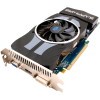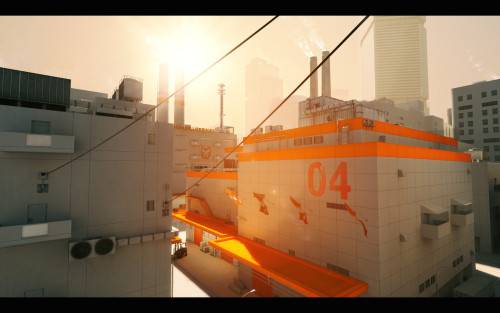- Qualcomm Launches Snapdragon 4 Gen 2 Mobile Platform
- AMD Launches Ryzen PRO 7000 Series Mobile & Desktop Platform
- Intel Launches Sleek Single-Slot Arc Pro A60 Workstation Graphics Card
- NVIDIA Announces Latest Ada Lovelace Additions: GeForce RTX 4060 Ti & RTX 4060
- Maxon Redshift With AMD Radeon GPU Rendering Support Now Available
Sapphire Radeon HD 4870 Vapor-X 2GB

Believe it or not, despite the HD 4890’s launch last month, the HD 4870 is still totally relevant, thanks to ATI’s current pricing structure. There’s a card for every budget, and if you’re willing to spend around $180, you can get hooked up with a 1GB version of the card we’re taking a look at today. It’s silent, keeps cool, and still delivers great performance for the money.
Page 7 – Mirror’s Edge
What was the last first-person game on the PC to truly blow you away, or offer some unique gameplay experience? New first-person shooters come out quite often, and while some show off some new features and gameplay twists, few of them truly regenerate the genre like we’d hope. Mirror’s Edge is a title that strived to do just that, and for the most part, I’d have to say they’ve done a great job.
First and foremost, Mirror’s Edge isn’t so much a first-person shooter as it is a first-person adventure game, because for the most part, combat isn’t the main focus. Throughout some of the few levels I played through, at times there could be a full ten-minute span without even seeing a single person, which is actually somewhat refreshing. The game focuses on figuring out the best way to get from point A to point B, heavily utilizing the parkour style of travel.
Most levels in Mirror’s Edge offers a similar level of system-intensity, so I based our choice on one that was fun to play through, and one that allowed an easily-replicable run-through. It takes place in chapter six, “Pirandello Kruger”, and Checkpoint A. We begin in a large building, behind a window, looking out at the city. Our run-through takes us outside of this building, down to the street and up to the top of the building shown to the right in the above screenshot.



We see some slight improvement with the latest drivers on the 1680×1050 resolution, but at 1920 and 2560, the performance is essentially identical between the 1GB and 2GB cards. Great performance overall, as long as PhysX isn’t one of your requirements.
|
Graphics Card
|
Best Playable
|
Avg. FPS
|
|
NVIDIA GTX 295 1792MB x 2
|
2560×1600 – Max Detail, 8xAA
|
118.680 FPS
|
|
NVIDIA GTX 285 1GB x 2
|
2560×1600 – Max Detail, 8xAA
|
88.346 FPS
|
|
Zotac GTX 295 1792MB
|
2560×1600 – Max Detail, 8xAA
|
70.562 FPS
|
|
NVIDIA GTX 275 896MB
|
2560×1600 – Max Detail, 8xAA
|
54.090 FPS
|
|
NVIDIA GTX 285 1GB
|
2560×1600 – Max Detail, 8xAA
|
48.385 FPS
|
|
Palit GTX 280 1GB
|
2560×1600 – Max Detail, 8xAA
|
44.806 FPS
|
|
Sapphire HD 4890 1GB
|
2560×1600 – Max Detail, 8xAA
|
44.531 FPS
|
|
Diamond HD 4870 1GB
|
2560×1600 – Max Detail, 8xAA
|
41.452 FPS
|
|
XFX GTX 260/216 896MB
|
2560×1600 – Max Detail, 8xAA
|
38.122 FPS
|
|
Sapphire HD 4870 2GB
|
2560×1600 – Max Detail, 8xAA
|
37.100 FPS
|
|
Palit HD 4870 X2 2GB
|
2560×1600 – Max Detail, 8xAA
|
35.297 FPS
|
|
NVIDIA GeForce GTS 250 1GB
|
2560×1600 – Max Detail, 4xAA
|
35.756 FPS
|
|
Sapphire HD 4830 512MB
|
2560×1600 – Max Detail, 4xAA
|
32.589 FPS
|
|
ASUS GeForce 9800 GTX+ 512MB
|
2560×1600 – Max Detail, 0xAA
|
46.250 FPS
|
|
Sapphire HD 4670 512MB
|
1920×1200 – Max Detail, 0xAA
|
39.204 FPS
|
With 42.829 FPS on average with 4xAA, we were cutting it somewhat close to what we consider to be a truly smooth gameplay experience for this title, but if you really love your 8xAA, the frame rates you’re left over with are still totally manageable.
Support our efforts! With ad revenue at an all-time low for written websites, we're relying more than ever on reader support to help us continue putting so much effort into this type of content. You can support us by becoming a Patron, or by using our Amazon shopping affiliate links listed through our articles. Thanks for your support!






